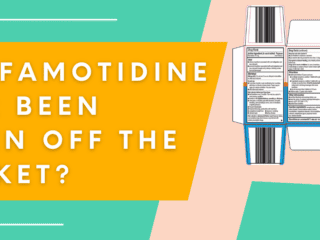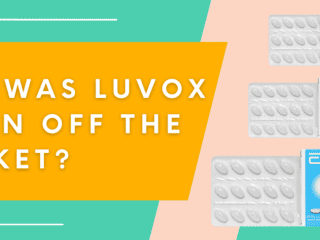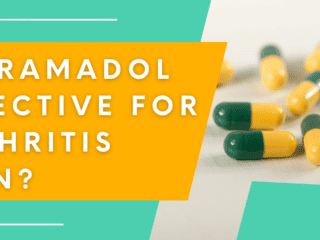Kenalog injections help many people with their symptoms of allergies, especially severe hay fever. However, it’s had a couple of problems regarding side effects, to the point of being dropped from use in some countries.
But why was Kenalog taken off the market? Was it because of its side effects? Our article will discuss the facts behind its “withdrawal”.Â
The History of Kenalog
What is Kenalog?
Kenalog is a topical medication that contains triamcinolone, a potent corticosteroid that reduces the actions of chemicals in the body that cause inflammation. At the same time, triamcinolone is also a glucocorticoid used to treat certain skin diseases, allergies, and rheumatic disorders and can be used to prevent the worsening of asthma and chronic obstructive pulmonary disease (COPD).
Kenalog is manufactured by Bristol-Myers Squibb. Kenalog can be taken in various ways, including orally (tablets), intramuscular injections (Kenalog-40), and inhalation.
Controversies Surrounding Kenalog
The Problem With Kenalog
Kenalog-40 is no longer prescribed by the UK National Health Service (NHS) due to safety concerns. Previously, the NHS previously prescribed routine Kenalog injections to people with hay fever; however, their current guidelines have determined that the potential risks do not justify the benefits people may gain from the treatment.
Like all steroids, Kenalog injections can cause unwanted side effects, although these are rare at the dose levels you get from them. However, what makes the problem with Kenalog injections unique from regular steroids is that the effects could last for 3 weeks or more. Health authorities have also said that the injection can make patients more susceptible to flu, chickenpox, and shingles.
Some of the more severe side effects noted with Kenalog injections include:
- Swelling of the face, lips, or throat
- Breathing difficulties
- Skin itching, redness, or a rash
- Sticky black stools
- Severe abdominal pain
- Vomiting blood
Other psychological side effects have also been reported after having been administrated with Kenalog:
- Bouts of depression
- Feeling high (mania)
- Changing moods
- Anxiousness
- Sleeping problems
- Cognitive problems
- Memory loss
- Feeling, seeing, or hearing things that do not exist.
- Suicidal thoughts
Serious neurologic events have been reported with epidural injection of corticosteroids, such as spinal cord infarction, paraplegia, quadriplegia, cortical blindness, and stroke. In some cases, paralysis and even deaths have occurred after healthcare providers administered Kenalog without heeding the manufacturer’s label changes.
Anaphylactic allergic reactions have been reported but are very rare. One study found that the carboxymethylcellulose component of triamcinolone acetonide was behind such instances.
Since Kenalog-40 Injection is a suspension, it should not be administered intravenously. This medicine is to be administered only by or under the immediate supervision of a doctor.
Other Reported Side Effects
Topical kenalog is generally considered safe, but the following side effects have been known to occur, especially on the skin:
- Redness
- Hives
- Burning
- Itching
- Peeling
- Blisters
- Stretch marks
In addition to side effects on the skin, Kenalog-40 can also cause the following:
- Headaches
- Increased hair growth or thinning hair
- Nausea
- Bloating
- Appetite changes
- Stomach pains
- Blood pressure spikes
- Blood sugar spikes
- Cough
- Runny or stuffy nose
- Fluid retention
- Sleep problems (insomnia)
- Slow-healing wounds
The following serious side effects are a rarer occurrence but require immediate medical attention:
- Blurred vision, or seeing halos around lights
- Uneven heartbeats
- Mood changes
- Unexpected weight gain
- Puffiness in the face
- Constant fatigue
To avoid the risk of side effects, follow your doctor’s instructions. Keep Kenalog away from the face, eyes, or on body areas with skin folds or thin skin to avoid irritation. Avoid covering the skin treated with Kenalog, as it can increase the amount of the drug your skin absorbs, which may lead to unwanted side effects.
Children are more sensitive to the effects of Kenalog, so avoid using it without a doctor’s prescription.
Get medical help right away if side effects persist or worsen.
Kenalog in Recent Times
Potential Use in COVID-19 Treatment
Nasal steroids, which are inexpensive and have low side effect profiles, can be used safely in treating patients with olfactory losses. Olfactory loss is one of the best-known symptoms associated with COVID-19. Luckily, one study found that using topical triamcinolone was found to be successful in the treatment of olfactory dysfunction due to COVID-19.
Dysgeusia is when a foul, salty, rancid, or metallic taste sensation persists in the mouth. This symptom has also been reported as a symptom of COVID-19 before it starts to affect the lungs or other organs. One study showed that using triamcinolone paste in the mouth significantly improved the olfactory and taste senses among COVID-19 patients.
Current Status
Despite the controversies surrounding the said medication, Kenalog is still officially licensed for treating severe hay fever in the UK, albeit without the endorsement or recommendation it had previously enjoyed. It continues to be routinely administered to patients in most other countries worldwide for other uses.
Triamcinolone is available in the US under the following generic names:
- Aristocort
- Aristocort Forte
- Aristospan
- Clinacort
- Kenalog-10
- Kenalog-40
- Triamcot
- Triam-Forte
- Triesense
- Zilretta
FAQ Section
Was Kenalog banned in the USA?
No. Kenalog was never banned in the USA, nor was it ever banned in the UK, despite the NHS dropping its recommendation for use due to the high risk of possible side effects. At present, Kenalog is still officially licensed for treating hay fever in the UK and for other conditions in countries worldwide.
Are there any severe side effects associated with Kenalog?
Severe symptoms have been reported, such as swelling of the face, lips, or throat, breathing problems, abdominal pain, vomiting blood, anxiousness, sleeping problems, cognitive problems, hallucinations, and suicidal thoughts. Anaphylactic allergic reactions and neurological problems like para/quadriplegia have also been reported but are very rare.
Is Kenalog being used as a treatment for COVID-19?
Various studies have shown that using triamcinolone has helped significantly improve the olfactory and taste senses among COVID-19 patients.Â
Is Kenalog still available in the market?
Yes, Kenalog is still available and licensed for use worldwide, and generic versions such as Aristocort, Kenalog-10, Triamcot, and Zilretta are also available. Triamcinolone is also available in tablet and inhalant forms.Â
Conclusion
Kenalog, for its potent effects in combatting allergies and severe hay fever, can still result in moderate to severe side effects, which can put one’s health at grave risk if not remediated and treated properly. However, despite its problems, Kenalog is still licensed and used as a treatment option worldwide, with continued optimal results.
Before starting with any medication, always consult with your healthcare provider to see if the medication you choose would be compatible with your health condition and better suit your health needs. You can also ask for, and weigh other possible treatment options.
Disclaimer: this article does not constitute or replace medical advice. If you have an emergency or a serious medical question, please contact a medical professional or call 911 immediately. To see our full medical disclaimer, visit our Terms of Use page.
Disclaimer: this article does not constitute or replace medical advice. If you have an emergency or a serious medical question, please contact a medical professional or call 911 immediately. To see our full medical disclaimer, visit our Terms of Use page.









